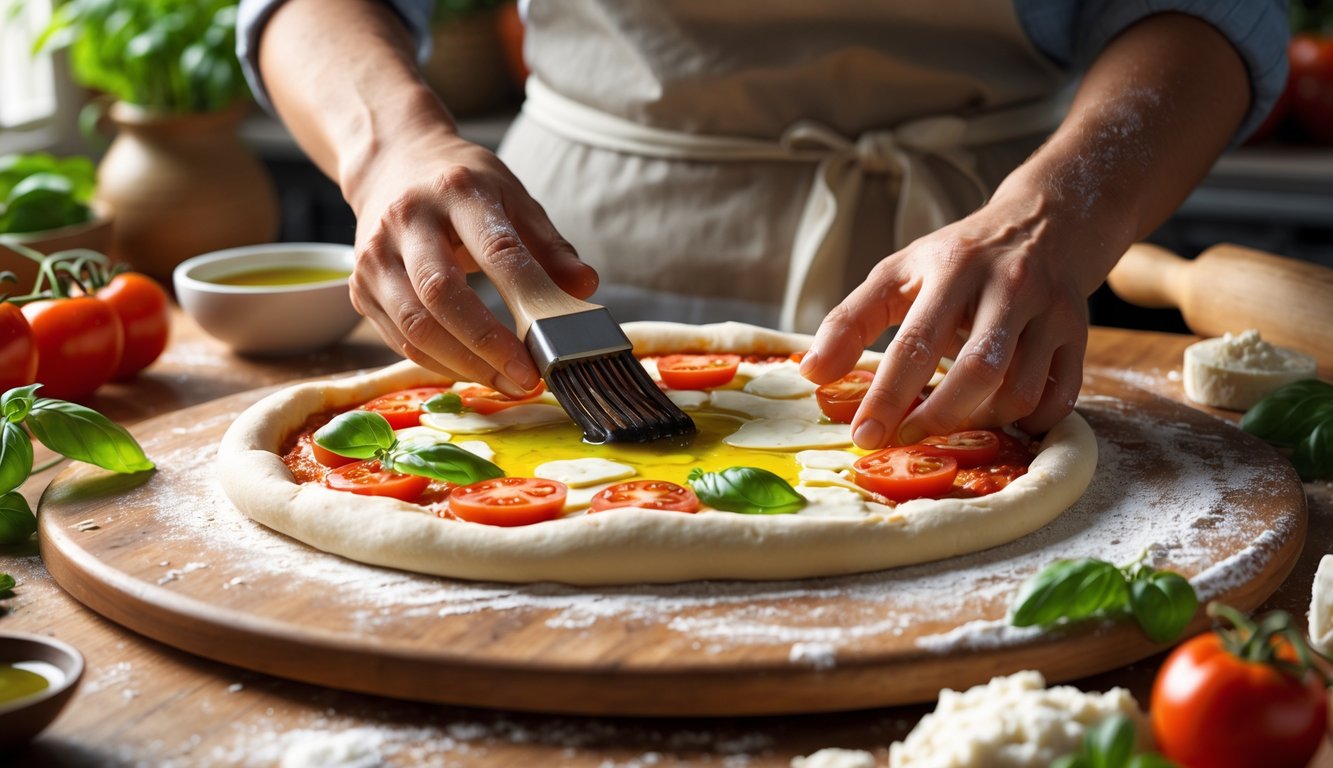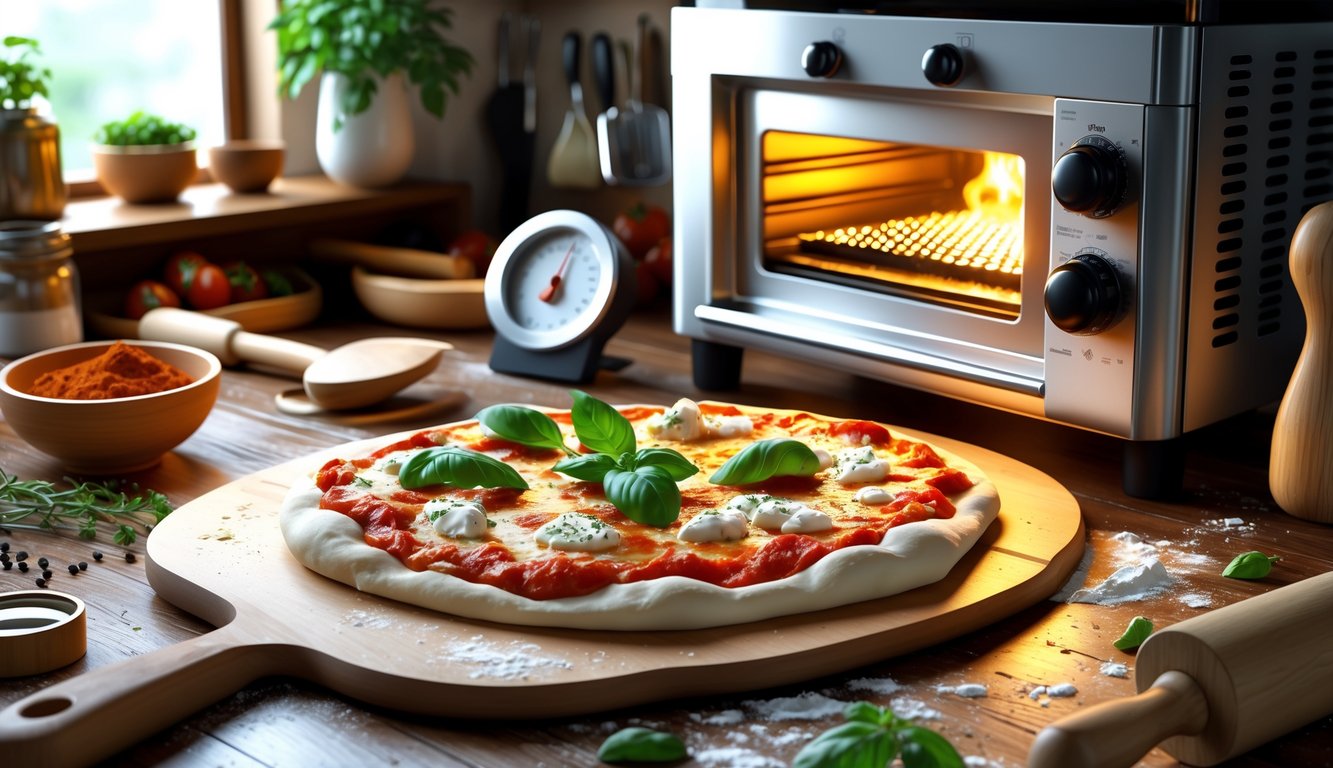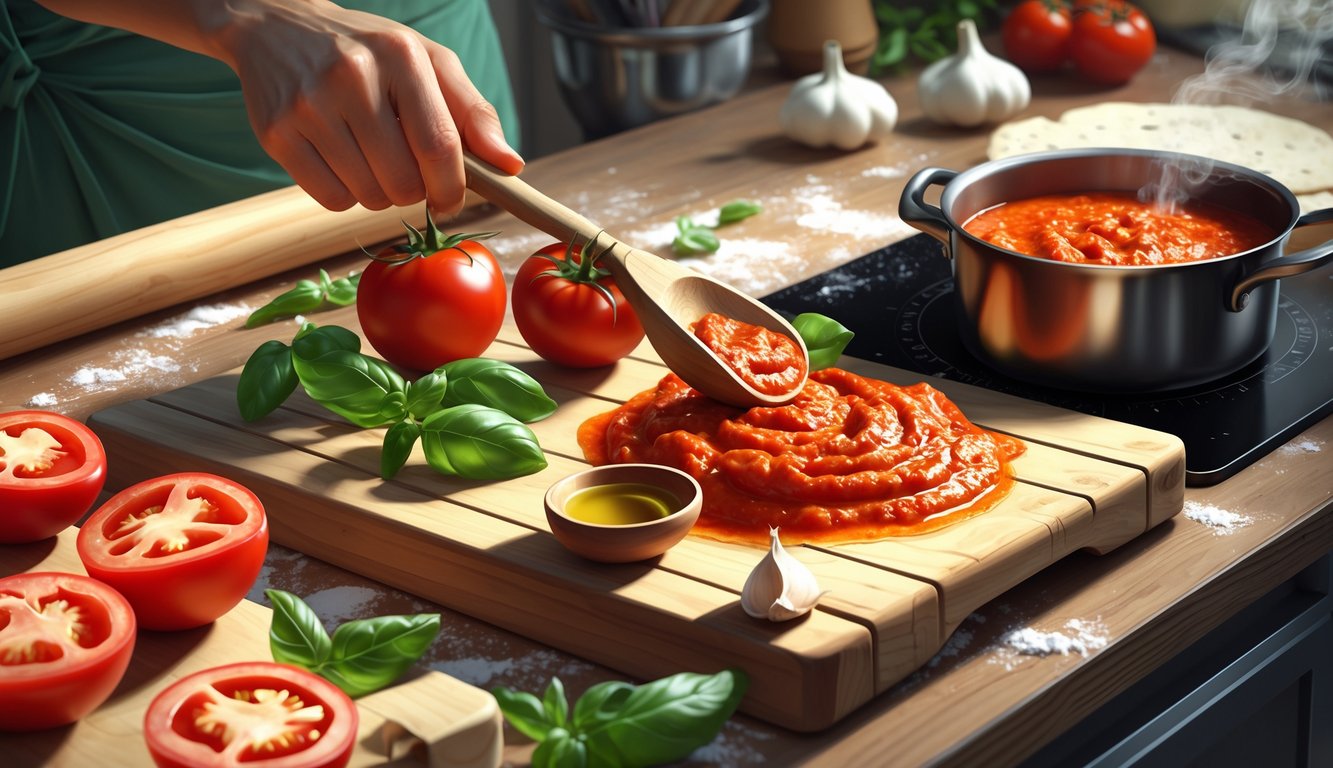
Avoiding a Soggy Base
Soggy bottoms are my nemesis. I can layer toppings like a drill sergeant, but if I use watery cheese or dump on too much sauce, it’s game over. I learned the hard way: whole-milk, low-moisture mozzarella is non-negotiable, and if you’re using fresh, you better drain it until it weeps. Ignore hydration warnings and overload the dough? You’ll regret it. I keep reading about how dough finish temp changes the whole game. If I yank the pizza out too soon or forget to crank the heat, it’s chewy cardboard all over again. Par-baking (again) helps, but baking right on a hot stone is what finally gave me a crust that didn’t fold like a soggy napkin. And yeah, my nephew poured pineapple juice on his slice once. Not sure what that proves, but apparently, sauce isn’t the only threat out there.
Oven Temperature and Baking Essentials

I’ve incinerated more frozen pizzas than I care to admit, thinking “just crank the dial, right?” Nope. Turns out, understanding how heat, surface, and sticky dough interact is the only way to avoid cursing at your oven. Sometimes I get it right, sometimes I wind up scraping cheese off the floor, but I keep coming back because, I don’t know, hope?
Hitting the Right Temperatures
Let’s be honest: anything under 425°F and you’re just making bread with toppings. My oven says it hits 500°F, but I don’t trust it—oven thermometers are the only truth-tellers in my kitchen. I’ve read so many guides (like this one) and they all scream the same thing: 475°F or bust. Every little degree seems to matter. Alton Brown once said, “A hot oven is essential—everything else is an excuse.” He’s not wrong. My smoke alarm disagrees, but whatever.
Using a Pizza Stone or Steel
Stones, steels, whatever—honestly, it’s all about blasting the bottom of your dough with heat. I spent years sliding pizza onto cold pans and then acting surprised when it came out limp. Once I started using a preheated steel (and dusted my peel with semolina, not flour—makes a difference), things finally improved. Some folks use cornmeal, but I think it tastes like sand. Steel heats up faster and holds heat longer, but it’s not cheap. I watched a pro kitchen once—they used whatever was clean, so maybe I’m overthinking it. First time I tried a steel, I nearly burned the crust. My dog didn’t complain, though. Oven mitts? I forget them half the time.
Secrets to Delicious Pizza Sauce

Jarred sauce is a trap. I tried it once, never again. The smell alone is enough to make me question my life choices. I’ve thrown together midnight pizzas where the only difference between “meh” and “wow” was the sauce. Why do I keep forgetting that?
Using Fresh Ingredients
Last winter I squeezed some store-brand pizza sauce out of a plastic bottle and immediately regretted everything. Tasted like metal and sadness. Next time, I used San Marzano crushed tomatoes—huge upgrade. Some chef I met insisted on fresh or imported tomatoes, swearing off anything that looked like tomato paste. He rolled his eyes at me when I asked about tomato paste—apparently, that’s for emergencies, not actual pizza. I sometimes add a splash of balsamic vinegar (not too much, or it’s salad dressing), torn basil, oregano, garlic, and whatever Italian seasoning is left in the jar. The difference? People actually eat the crust. That’s all I need to know.
Avoiding Too Much Sauce
Here’s the thing: more sauce never helps. I’ve watched people dump a ladle on and then wonder why their pizza turns into soup. A chef once looked at my pizza and said, “That’s soup, not pizza.” I get it now. Just use a spoon, paint a thin layer, and stop. If I overdo it, the middle collapses and I’m back to chewing wet dough. Thin sauce means the crust browns, toppings caramelize, and you get that little bit of char. Every time I forget, I’m stuck with a floppy, cheesy mess. Maybe that’s food, but it’s not pizza.



